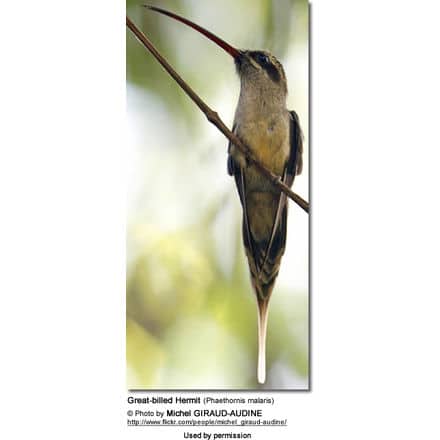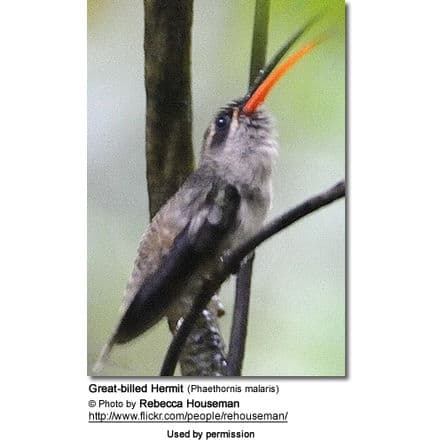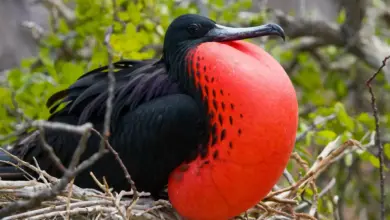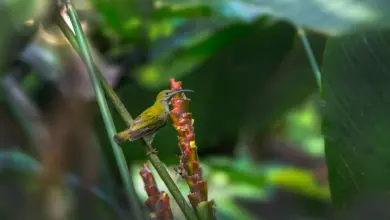Great-billed Hermits
The Great-billed Hermits (Phaethornis malaris) – also known as Margaretta’s Hermit or Nordmann’s Hermit – is a South American hummingbird with a wide range.
Alternate (Global) Names
Spanish: Ermitaño de Pico Grande, Ermitaño Picogrande, Ermitaño Piquigrande …Portuguese: Besourão-de-bico-grande, besourão-do-bico-grande, rabo-branco-bicudo … Italian: Colibrì del sole beccogrande, Eremita beccogrosso … French: Ermite à long bec … Czech: Kolibrík dlouhozobý, kolib?ík dlouhozobý … Danish: Langnæbbet Eremit … German: Dunkler Schattenkolibri, Langschnabeleremit, Langschnabel-Eremit … Finnish: Guayananerakkokolibri … Japanese: ooyumihashihachidori … Dutch: Langsnavelheremietkolibrie, Langsnavel-heremietkolibrie …Norwegian: Stornebberemitt … Polish: pustelnik wielkodzioby … Russian: ??????????????? ????????? ??????? … Slovak: slnecnícek velkozobý … Swedish: Långnäbbad eremit
Distribution / Habitat
The Great-billed Hummingbird inhabits subtropical or tropical moist lowland forests in Bolivia, Brazil, eastern Colombia, Ecuador, French Guiana, Peru, eastern Suriname and Venezuela.
In Brazil, it occurs in the western region as well as the Brazilian state “Amapá” located in the extreme north, bordering French Guiana and Suriname to the north.
This species is sedentary (non-migratory) throughout its range.
They are usually found in understory of terra firme, pre-montane, humid tropical and transitional forests, bamboo thickets and shrubs.
Subspecies and Ranges:
- Phaethornis malaris malaris – nominate race (Nordmann, 1835) – Surinam and French Guiana to the northern-central state Amapá in Brazil.
- Phaethornis malaris bolivianus (Gould, 1861) – Southeastern Peru, Bolivia and western Brazil to western bank of the Tapajós river (south of Amazon).
- Phaethornis malaris insignis – birds occurring between the lower reaches of the Madeira and Tapajós rivers were separated as insignis, but they are indistinguishable from bolivianus and, on this basis, this race is mostly considered invalid.
- Phaethornis malaris moorei (Lawrence, 1858) – Eastern Colombia, eastern Ecuador and northern Peru
- Phaethornis malaris ucayali – subspecies (usually considered invalid) – subspecies moorei and bolivianus intergrade in the East Andes of Peru and their offspring are described as “ucayalii”. This proposed subspecies is by most considered invalid.
- Phaethornis malaris insolitus (Zimmer, 1950) – Eastern Colombia, south Venezuela, adjacent northern Brazil.
- Phaethornis malaris margarettae (Ruschi, 1972) – confined to forest remnants within its range in coastal eastern Brazil (Pernambuco to Espírito Santo) – Some authorities consider margarettae a full species. Proposed race camargoi is inseparable from margarettae.
- Phaethornis malaris ochraceiventris (Hellmayr, 1907) – Northeastern Peru and western Brazil to lower Madeira river (south of Amazon) – may also be a separate species
- Phaethornis malaris bolivianus (Gould, 1861) – Southeastern Peru, Bolivia and western Brazil to western bank of the Tapajós river (south of Amazon).
Description
This medium-sized hermit is usually between 5.1 to 6.7 inches (13 – 17 cm) long (including its beak and tail). Its common name refers to its uncommonly (for this genus) large bill.
Similar Species: The Great-billed Hermit is similar to the Long-tailed Hermit, but can be distinguished from this species by its faint gular stripe (= dark stripe from throat to chin)
Nesting / Breeding
Hummingbirds in general are solitary and neither live nor migrate in flocks; and there is no pair bond for this species – the male’s only involvement in the reproductive process is the actual mating with the female.
During the breeding season, the males of many Hermit species form leks (= competitive mating displays) and congregate on traditional display grounds. Once a female enters their territory, they display for her. Their display may entail wiggling of their tails and singing. Willing females will enter the area for the purpose of choosing a male for mating. Oftentimes she will choose the best singer.
He will separate from the female immediately after copulation. One male may mate with several females. In all likelihood, the female will also mate with several males. The males do not participate in choosing the nest location, building the nest or raising the chicks.

The female Great-billed Hermit is responsible for building the remarkable cone-shaped nest which hangs by a single strong string of spiders’ silk and/or rootlets from some overhead support, which could be a branch or the underside of the broad leaves of, for example, Heliconia plants, banana trees or ferns about 3 – 6 ft (1 – 2 m) above ground. However, these unusual nests have been found beneath bridges, in highway culverts and even hanging from roofs inside dark buildings. The nest is often near a stream or waterfall. It is constructed out of plant fibers woven together and green moss on the outside for camouflage in a protected location. She lines the nest with soft plant fibers, animal hair and feather down, and strengthens the structure with spider webbing and other sticky material, giving it an elastic quality to allow it to stretch to double its size as the chicks grow and need more room.
The average clutch consists of 1 – 3 white eggs (most commonly 2), which she incubates alone for 14 to 16 days, while the male defends his territory and the flowers he feeds on. The young are born blind, immobile and without any down.
The female alone protects and feeds the chicks with regurgitated food (mostly partially-digested insects since nectar is an insufficient source of protein for the growing chicks). The female pushes the food down the chicks’ throats with her long bill directly into their stomachs.
As is the case with other hummingbird species, the chicks are brooded only the first week or two, and left alone even on cooler nights after about 12 days – probably due to the small nest size. The chicks leave the nest when they are about 21 – 24 days old. She produces one brood a season.
Diet / Feeding
The Great-billed Hermits primarily feed on nectar taken from a variety of brightly colored, scented small flowers of trees, herbs, shrubs and epiphytes. They favor flowers with the highest sugar content (often red-colored and tubular-shaped).
Hummingbird Resources
- Hummingbird Information
- Hummingbird Amazing Facts
- Attracting Hummingbirds to Your Garden
- Hummingbird Species
- Feeding Hummingbirds








